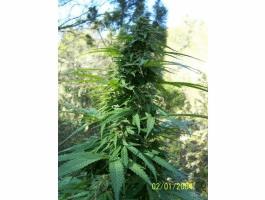
- Breedeur: Seedsman
- Variété Originale: Original
- Type de graines disponible: Régulière
- Parents: Traditional landrace pure-bred
- Origines: Nord de l'Afghanistan, Culture Traditionnelle du Charas cultivar
- Génotype: Indica
- Temps de flo. Indoor: nc
- Temps de flo. Outdoor: Fin décembre à Début Janvier
- Commercialisation:
- Odeur: Moyenne
- Signaler Variété
Genetics: Traditional North Afghan charas cultivar
Type: Traditional landrace/pure-bred
Variety: Indica Giant
Height: 3-4 meters in natural outdoor environment in Mazar-i-Sharif.
Yield: 1.5 to 2 kg of dried flowers in natural outdoor environment
Aroma: pungent, intense terpene aroma, classic Afghan, with some sweetness
Harvest: early December to early January
Characteristics: Unusually large indica strain with classic wide leaved characteristics.
Grown around the desert towns of Balkh, Mazar-i-Sharif and Sheberghan in the far north of Afghanistan, close to the modern borders of Turkmenistan, Uzbekistan and Tajikistan. This Mazar-i-Sharif strain produces the legendary hashish known as "Shirak-i-Mazar" and "Milk of Mazar". The people of these regions are a patchwork of Turkic, Tajik, Afghan and Pashtun tribes, and the history of Mazar-i-Sharif strains is likely to be equally complex. In fertile and well-irrigated soils these vigorous giants are capable of reaching 4 metres in height or more, and will produce a similarly immense yield of intensely resinous flowers. Traditionally harvested in the first half of December with the onset of the brutal Central Asian winter, Mazar-i-Sharif plants will enjoy cold conditions, including snow, and will turn a deep blood red in low temperatures. Growers favour leaving harvest as late as possible, sometimes into early January. Sieved "Milk of Mazar" garda is very resinous and so can be hand-pressed to make charas; it has a distinctively pungent, sweet aroma and a dreamily mellow high. Over-indulgence produces a mind-warping, immobilising and narcotic effect.


